The Stringed Instrument Database
B
Baglama
- See Saz
Baglamas
Alternative names: Baglamadaki, Baklama, Baklamas.
Origin: Greece, evolving from the Turkish Saz (also known as a Baglama).
Tuning: D5 D4 , A4 A4 , D5 D5 or D4 D5 , A4 A4 , D5 D5
Strings/Courses: 6/3
Further notes: 3 doubled courses. A smaller version of the Bouzouki. Steel strings.
Scale Length: 340-360mm
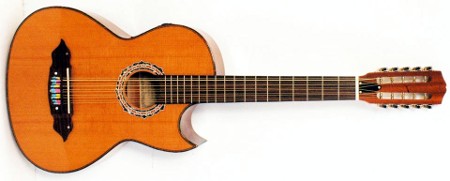
Bajo Sexto
Alternative names: Bajo De Espiga, Bajo Quinto (when without the lowest course)
Origin: Mexico, 19th century.
Tuning: E2 A1, A2 A1 , D3 D2 , G2 G2 , C3 C3 , F3 F3
Strings/Courses: 12/6
Further notes: Spanish for 'sixth bass'. There is also a 'Bajo Quinto' ('Fifth Bass') which is the same but without the lowest course. Steel strings. A Bajo Sexto or Quinto player is sometimes called a Bajista, although this can also refer in Spanish to a bass guitarist.
Scale Length: 650-810mm
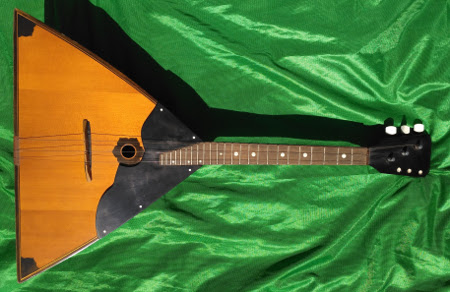
Balalaika
Alternative names: Balabaika, Balalayka.
Origin: Russia, 16th or 17th century.
Tuning: E4, E4, A4 for Prima. A3, A3, D4 for the Secunda. E3, E3, A3 for the Alto. E2, A2, D3 for the Bass. E1, A1, D2 for the Contrabass. B4, E5, A5 for the rare piccolo.
Strings/Courses: 3/3 or 6/3
Further notes: Usually the Balalaika has 3 single strings, but there are also balalaikas with 3 double strings in unison courses. The double-strung version is more popular in the Ukraine, whilst in Russia they almost always have single strings. Usually steel strings, but sometimes a mix of steel and nylon for the Prima.
Scale Length: 430-440mm for the Prima. 480-500mm for the Secunda. 510-530 for the Alto. 740-790mm for the Bass. 1090-1190mm for the Contrabass.
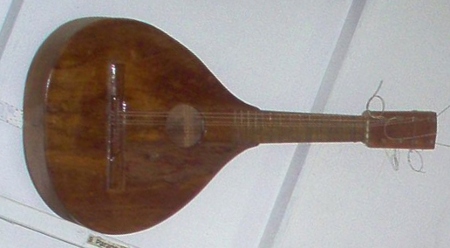
Bandol
Alternative names: Parang Mandolin, Creole Mandolin, Criolla Mandolin, Bandolin (though not to be confused with the Ecuadoran Bandolin below).
Origin: Trinidad.
Tuning: A3 A2, E3 E4, B4 B4, F#5 F#5.
Strings/Courses: 8/4
Further notes: The two lower courses have one steel and one nylon string each. The two higher courses are all nylon. Played in Parang music.
Scale Length: Usually about 450mm
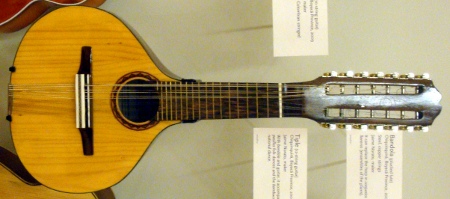
Bandola Andina Colombiana
Alternative names: Bandola Bogotana
Origin: Colombia. Probably evolved from the Spanish Bandurria (see below).
Tuning: F#3 F#3, B3 B3, E4 E4 E4, A4 A4 A4, D5 D5 D5, G5 G5 G5
Strings/Courses: 16/6
Further notes: Spanish for 'Andean Colombian Bandola'. Steel strings.
Scale Length: 330-350mm
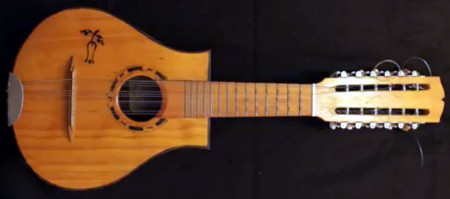
Bandola Aymara
Alternative names:
Origin: Northern Chile.
Tuning: G4 G5 G5 G5, C5 C5 C5, E5 E5 E5, G5 G5 G5 or G4 G5 G5 G5, B4 B4 B4 B4, E5 E5 E5 E5, G5 G5 G5 G5. Instruments with 12 strings omit one string per course (on the lowest course one of the higher octave strings).
Strings/Courses: Usually 16/4, sometimes 12/4.
Further notes: Steel strings.
Scale Length:
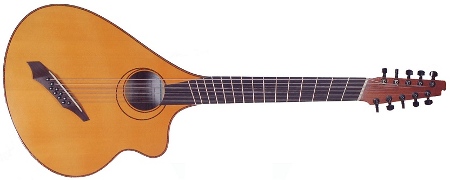
Bandola Bajo
Alternative names:
Origin: Colombia. A relatively modern invention. Only made by a few luthiers, and used in orchestras of the Bandola Andina Colombiana (above).
Tuning:
Strings/Courses: 10/6
Further notes: Spanish for 'Bass Bandola'. Steel strings.
Scale Length:
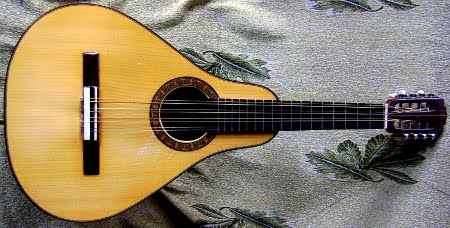
Bandola Central
Alternative names: Bandola Guayanese, Bandola Cordillerana, Mirandina, Guariquena.
Origin: Venezuela.
Tuning: E4 E3, A3 A3, D4 D3, G4 G4 (in fourths) or G4 G3, D4 D3, A4 A3, E5 E5 (in fifths).
Strings/Courses: 8/4
Further notes: Steel or Nylon strings.
Scale Length: About 450mm
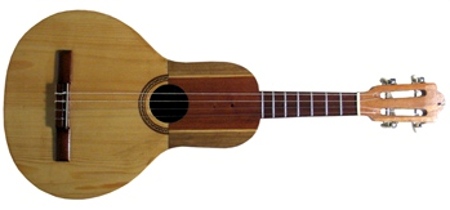
Bandola Llanera
Alternative names: Often called just 'Bandola', as this is the most common type.
Origin: Venezuela.
Tuning: A3, D4, A4, E5
Strings/Courses: 4/4
Further notes: Spanish for 'Bandola from the plains'. Traditional models will only have 7 or 8 frets, but modern ones often have more. Nylon strings.
Scale Length: 450-460mm
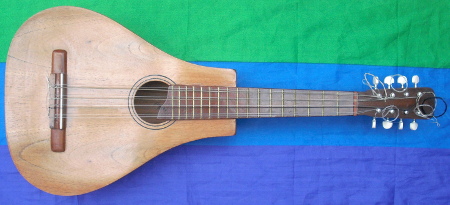
Bandola Oriental
Alternative names:
Origin: Venezuela.
Tuning: Usually A4 A3, D5 D4, A4 A4, E5 E5 but sometimes the lowest course is lowered to a G like a mandolin.
Strings/Courses: 8/4
Further notes: Spanish for 'eastern Bandola'. Nylon strings.
Scale Length: 440-460mm
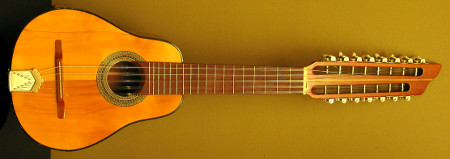
Bandolin
Alternative names: Bandolina
Origin: Ecuador
Tuning: E5 E4 E5, A5 A4 A5, D5 D5 D5, F#5 F#5 F#5, B5 B5 B5 or E5 E4 E5, A5 A4 A5, D5 D5 D5, G#5 G#5 G#5, B5 B5 B5
Strings/Courses: 15/5
Further notes: Steel strings.
Scale Length: 430mm
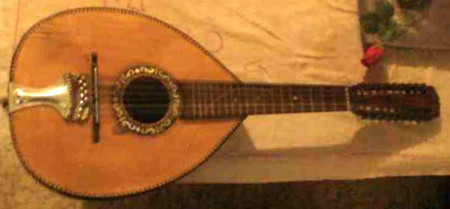
Bandolon
Alternative names: .
Origin: Mexico
Tuning:
Strings/Courses: 12/6 or 18/6
Further notes: Steel strings.
Scale Length:
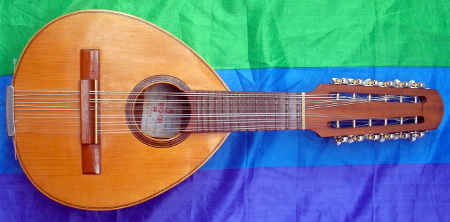
Bandurria
Alternative names:
Origin: Spain, medieval period.
Tuning: G#3 G#3, C#4 C#4, F#4 F#4, B4 B4, E5 E5, A5 A5
Strings/Courses: 12/6
Further notes: Steel strings.
Scale Length: 260mm
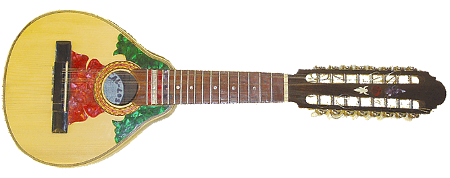
Bandurria Marimacho
Alternative names: Bandurria Cusqueno
Origin: Cusco, Southern Peru.
Tuning: D4 D3 D4, G4 G3 G4, B4 B4 B4, E5 E5 E5 is most common, but many other tunings exist.
Strings/Courses: 12/4
Further notes: Steel strings. Tripled courses. 'Marimacho' is Spanish for Hermaphrodite!
Scale Length: About 360mm. Usually slightly shorter than the standard Peruvian and Bolivian bandurria below.
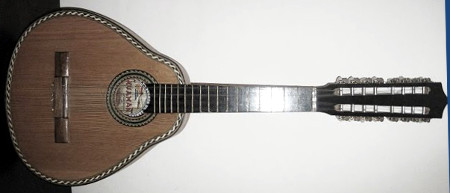
Bandurria, Peruvian
Alternative names: Bolivian Bandurria
Origin: Peru and Bolivia, 1800s.
Tuning: D4 D3 D4, G4 G3 G4, B4 B4 B4, E5 E5 E5 or E4 E3 E4, G4 G3 G4, C4 C4 C4, E5 E5 E5
Strings/Courses: 12/4 or 16/4
Further notes: Steel strings. Tripled or quadrupled courses.
Scale Length: 340-380mm
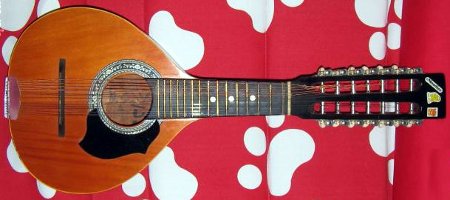
Bandurria, Philippine
Alternative names: Banduria (only one R), Harp-Bandurria, Bandurya.
Origin: The Philippines, during Spanish colonial rule (1521-1898).
Tuning: F#3, B3 B3, E4 E4, A4 A4 A4, D5 D5 D5, G5 G5 G5
Strings/Courses: 14/6
Further notes: Steel strings.
Scale Length: Often slightly longer than the Traditional Spanish variety. About 300mm.
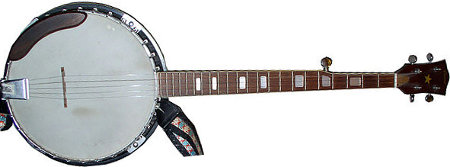
Banjo
Alternative names:
Origin: USA, 18th century.
Tuning: G4, D3, G3, B3, D4 is most common, but there are many others. Usually an open tuning.
Strings/Courses: Usually 5/5. When it has 4/4, it is called a Plectrum Banjo, and it is the G4 that is missed out.
Further notes: Steel strings usually, but sometimes nylon strings or fishing line are used for an 'old-time' sound. There is also a ukulele neck on a banjo body called a Banjolele, and a mandolin neck on a banjo body called a banjolin or a banjo-mandolin. The Banjolin will sometimes have single instead of double courses of strings. For tuning, scale and other details of these two, see Ukulele or Mandolin respectively. There was also a smaller 5 string banjo called a Banjearine or Banjourine, but these are very rare nowadays.
Scale Length: Varies among the different types, but the common 5-string version is usually about 650mm. The Banjearine is about 500mm.

Banjo, Cello
Alternative names:
Origin: USA, 1880's.
Tuning: G3, D2, G2, B2, D3 for 5 string versions (one octave below the standard banjo) or C2, G2, D3, A3 for 4 string versions (the same tuning as the cello, and one octave lower than the tenor banjo).
Strings/Courses: 5/5 or 4/4
Further notes: Usually nylon strings, but sometimes steel.
Scale Length: 620-670mm
Banjo, Tahitian
- See Ukulele, Tahitian.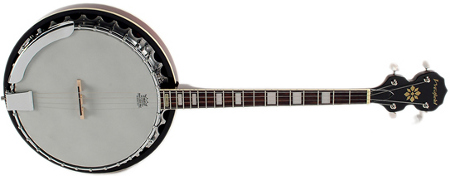
Banjo, Tenor
Alternative names:Irish Banjo, Tango Banjo, Melody Banjo.
Origin: USA, 1910's.
Tuning: C3, G3, D4, A4 (Standard tuning) or G2, D3, A3, E4 (Irish tuning).
Strings/Courses: 4/4
Further notes: Steel strings.
Scale Length: 490-580mm
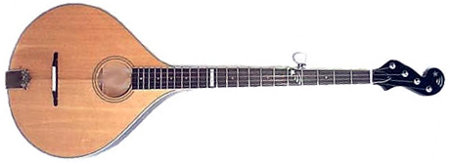
Banjola
Alternative names:
Origin: USA, early 20th century.
Tuning: G4, D3, G3, B3, D4
Strings/Courses: 5/5
Further notes: A mandolin/mandola body with a banjo neck. Not to be confused with the banjo-mandolin or the banjolin, which are mandolin necks on banjo bodies. Steel strings.
Scale Length: 660mm
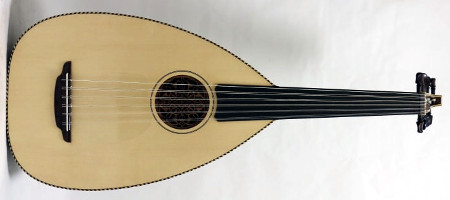
Barbat
Alternative names:Persian Oud
Origin: Iran (ancient Persia), over 5000 years ago.
Tuning: G2 G2, A2 A2, D3 D3, G3 G3, C4 C4
Strings/Courses: Usually 10/5, but sometimes 9/5 or 11/6 (with single bass string like the oud)
Further notes: A Persian/Iranian version of the oud, developed to closer resemble ancient Persian designs and better suit a different playing style. It usually has a smaller body and longer neck.
Scale Length: 580-600mm

Basolia
Alternative names: Basolya, Basedla.
Origin: Ukraine, 17th century.
Tuning: Tuned in fifths.
Strings/Courses: Usually 3/3, but sometimes 4/4 or 5/5
Further notes: Plucked, bowed and hit with a stick. Gut strings.
Scale Length: 700-750mm
Bass
- See Double Bass or Guitar, Bass.Benju
- See Akkordolia.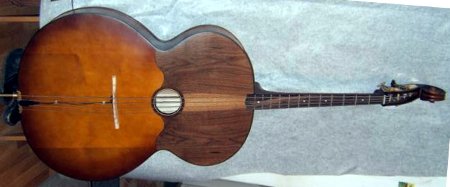
Berda
Alternative names: Bas, Beges, Berde, Bogos, Tamburabogo.
Origin: Croatia, Serbia, Slovenia
Tuning: E2, A2, D3, G3
Strings/Courses: 4/4
Further notes: Traditionally gut strings. Now usually steel.
Scale Length: 1150-1200mm

Berimbau
Alternative names:
Origin: Brazil.
Tuning:
Strings/Courses: 1/1
Further notes: Steel string. The string is shortened using a stone or coin. Played with a stick and used in Capoeira music.
Scale Length:

Bisernica
Alternative names: Prim, Prima, Pirma.
Origin: Croatia, Serbia, Slovenia
Tuning: E3, A3, D4, G4 G4 or E3, A3, D4 D4, G4 G4 or B3, E4, A4, D4 D4.
Strings/Courses: 5/4, 6/4 or 8/4
Further notes: Sometimes all courses are doubled. Steel strings.
Scale Length: 320mm-390mm
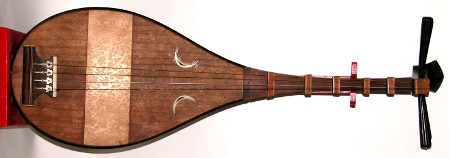
Biwa
Alternative names:
Origin: Japan, 8th century.
Tuning: B2, E3, F#3, B3 for the four stringed variety. C2, G2, C2, D3, G3 or A#2, F2, A#2, C3, D3 for the five stringed variety.
Strings/Courses: 4/4 or 5/5
Further notes: Can have 4 or 5 strings made of silk or nylon.
Scale Length: Usually about 700mm

Bordonua
Alternative names:
Origin: Puerto Rico, 16th century.
Tuning: A3 A2, D4 D3, F#3 F#4, B3 B3, E4 E4
Strings/Courses: 10/5
Further notes: Steel strings.
Scale Length: 550-600mm

Bouzouki
Alternative names: Bouzoukia
Origin: Greece. Evolved from the ancient Greek Pandura.
Tuning: Tetrachordo C3 C4, F3 F4, A3 A3, D4 D4. Trichordo D3 D4, A3 A3, D4 D4.
Strings/Courses: 8/4 or 6/3
Further notes: There are two varieties of Bouzouki - The Tetrachordo with 4 doubled courses and the Trichordo with 3 doubled courses. Steel strings.
Scale Length: 670-680mm
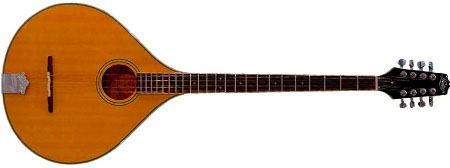
Bouzouki, Irish
Alternative names:
Origin: Ireland, 1960's.
Tuning: G3 G2, D4 D3, A3 A3, D4 D4 or G3 G2, D4 D3, A3 A3, E4 E4
Strings/Courses: 8/4
Further notes: Sometimes the lower two courses are tuned in unison instead of octaves. Created from the traditional Greek Bouzouki in the 60's. Steel strings.
Scale Length: 580-660mm
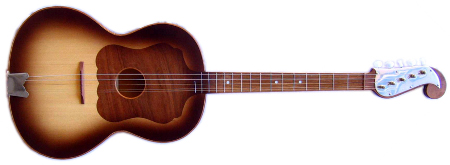
Brac
Alternative names: Basprim, Brach, Bracs, Basszprim.
Origin: Croatia, Serbia, Slovenia
Tuning: E2, A2, D3, G3 G3 or E2, A2, D3 D3, G3 G3 or B2, E3, A3, D3 D3.
Strings/Courses: 5/4 or 6/4
Further notes: Sometimes more than the highest course is doubled. Steel strings.
Scale Length: 510-570mm
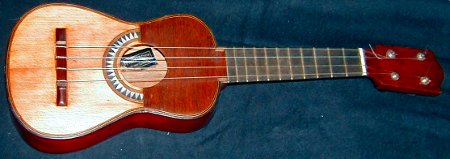
Braguinha
Alternative names: Machete de Braga
Origin: Madeira, Portugal
Tuning: D3, G3, B3, D4
Strings/Courses: 4/4
Further notes: Evolved from the Portugese Cavaquinho. Portugese for 'little Braga', a comparison to the Portugese Viola Braguesa. Nylon strings.
Scale Length: Usually about 330mm.
Buchundo
- See Akintong
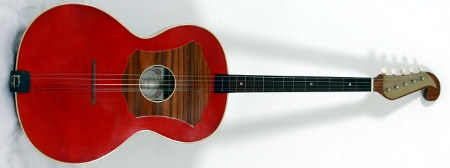
Bugarija
Alternative names: Kontra, Beglait, Bracso.
Origin: Croatia, Serbia, Slovenia
Tuning: D3, F#3, A3, D4 D4 or G3, B3, D4, G4.
Strings/Courses: 5/4 or 6/4
Further notes: Sometimes more than the highest course is doubled. Steel strings.
Scale Length: 640mm

Bulbul Tarang
Alternative names: Bulbultarang, Bulabula taranga, Indian banjo, Benju (in Pakistan), Kottafoshi (on the Maldives), Medolin (among Indians living in the Pacific islands), Shaahi Baaja (when electrified).
Origin: India and Pakistan, around 1930. Originated from the Japanese Taishogoto.
Tuning: There is no absolute pitch, but there is one course of melody strings, tuned in unison or octaves, several drone strings, tuned to the tonic or fifth of the melody strings.
Strings/Courses: varies/2
Further notes: The strings are fretted by pressing keys, which are often typewriter keys. More modern versions have piano-like keys. The strings are plucked with a plectrum or bowed. Steel strings.
Scale Length: Wide variation.
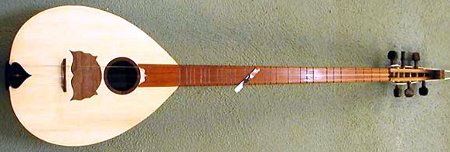
Buzuq
Alternative names: Buzok, Buzuk.
Origin: Lebanon. Related to the Greek Bouzouki and Turkish Saz.
Tuning: C3 C3, G3 G3, C4 C4
Strings/Courses: 6/3
Further notes: Steel strings.
Scale Length: 780mm

Byzanchy
Alternative names: Byzaanchy, Byzanchi, Byzanchie.
Origin: Tuva, Eastern Russia.
Tuning:
Strings/Courses: 4/2
Further notes:
Scale Length: